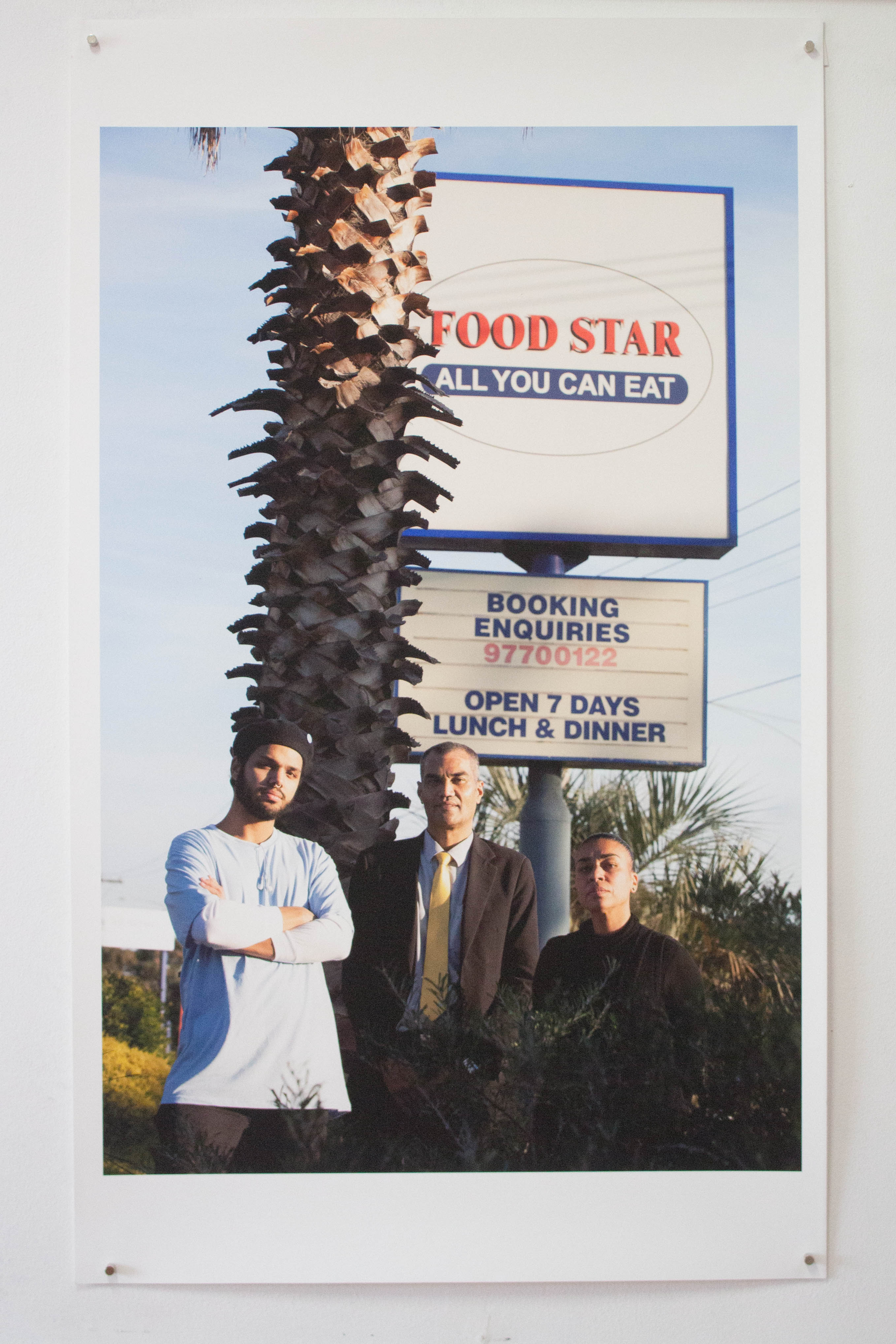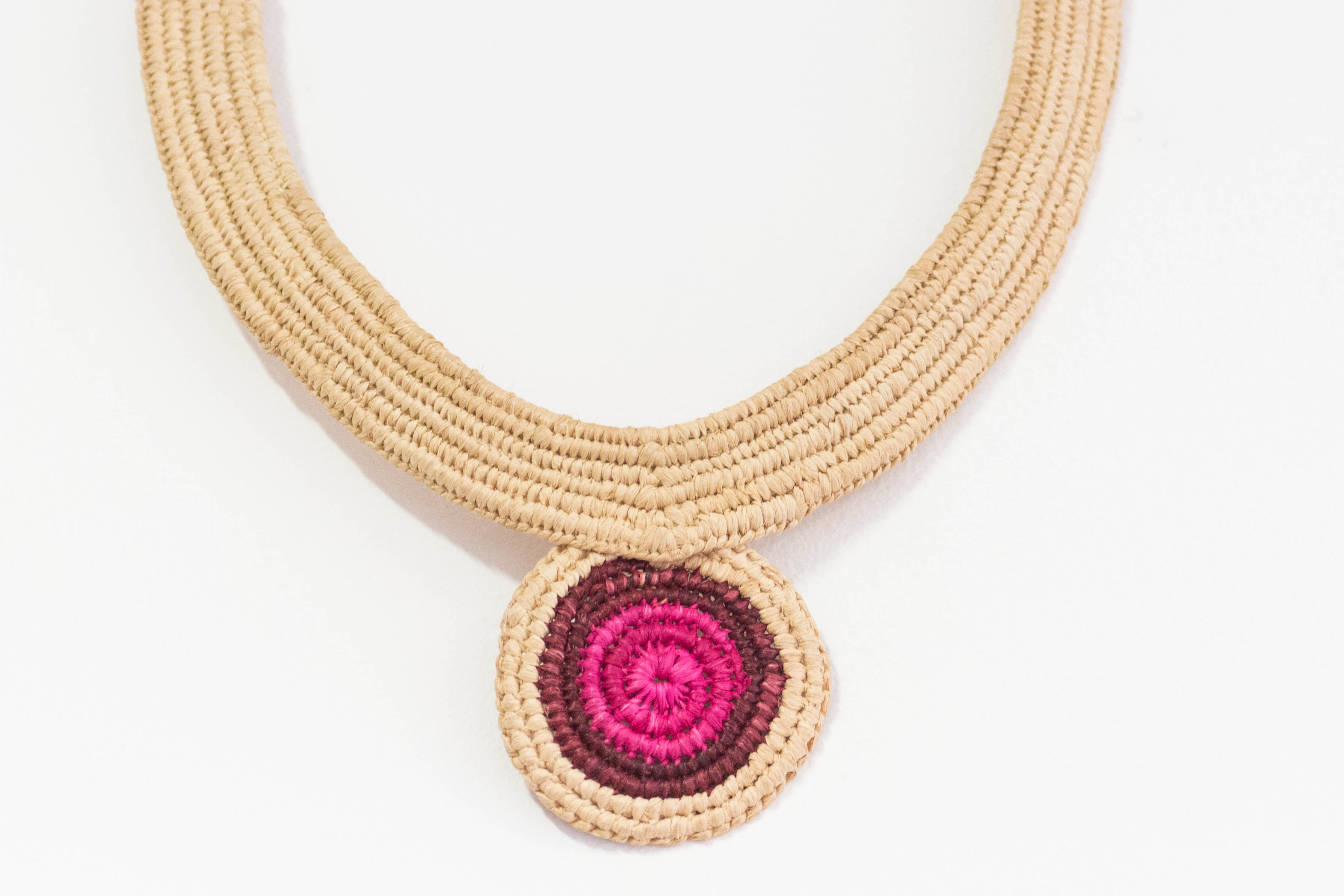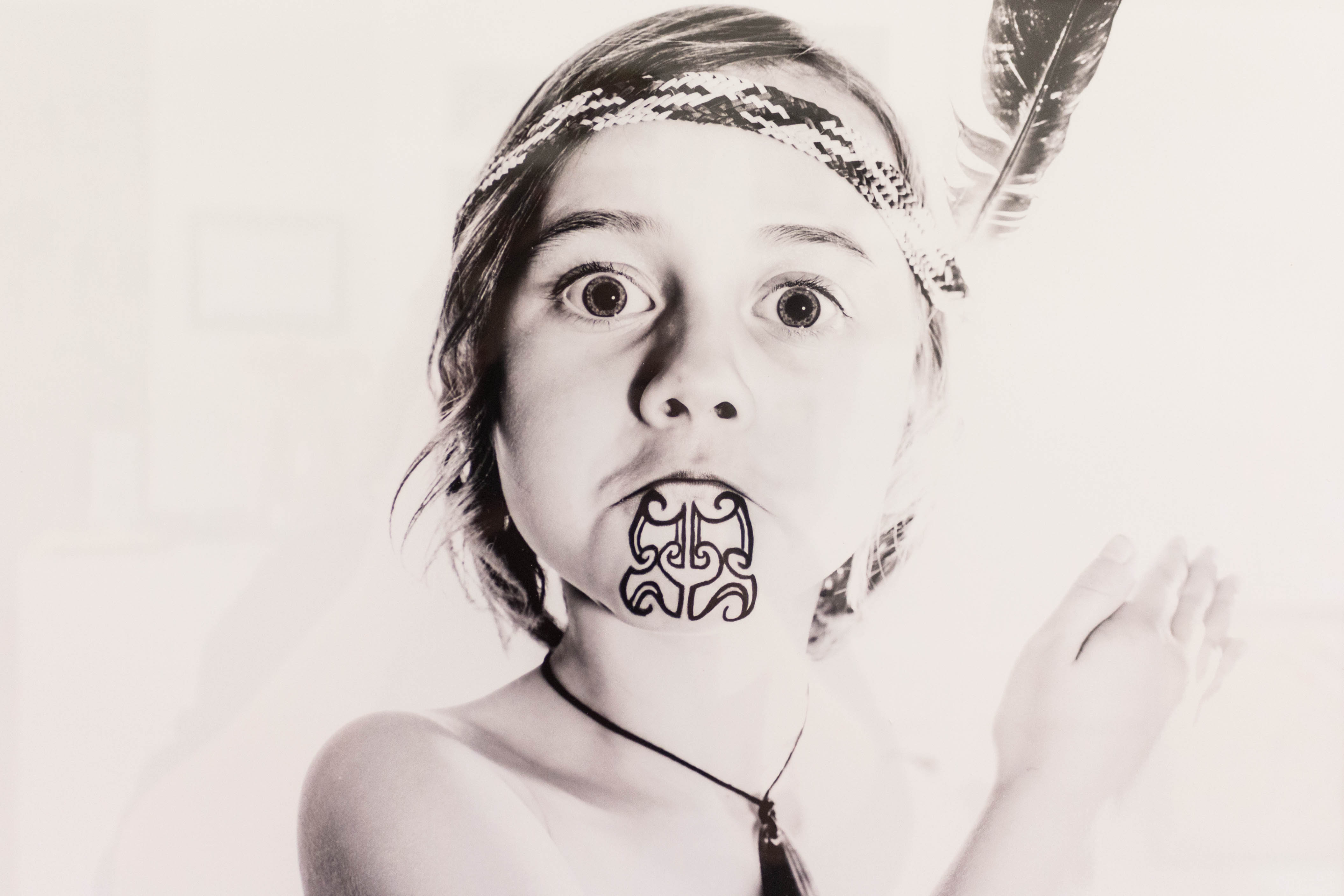
Curating a Pasifik space is unlike other art spaces. My mother taught me that if you pick a plant, treat it, dry it out and weave it into a mat it is still a living, breathing thing and it needs to be cared for. Mats need to be used, to be swept, sunned out if it’s damp. Pasifika art is much broader and well beyond the colonial measures that try to create ‘traditional’ versus ‘contemporary’ standards. Pasifika art is living art. Curating a Pasifik space means taking care of living, breathing objects.
In 2017, New Wayfinders was formed, an emerging art collective for people from the Oceanic diaspora based in Narrm/ Melbourne. Since then it has been remarkable how many Melbourne Pasifika community members who were low-key moonlighting as artists came out of hiding. More recently, in 2018, New Wayfinders co-founder Alec Reade and myself curated our first group exhibition,
New Wayfinders: Ocean Stories from Home, at Connections Art Space in Dandenong.
Alec and I were approached by the organisation to use the space for a New Wayfinders group show. We thought curating a show around ‘families’ would be a cute theme for our debut art exhibition as a collective. In retrospect, Alec and I completely underestimated the significance of this theme. As we found out, curating a show, working in our community and working within a family context proved to be more challenging than ‘cute’.
The exhibition featured the works of Ella Benore Rowe, Elvie Rowe, Alec Reade, Katherine Reade, Irihipeti Waretini, Marcelina Te Arohanui Pijewska, Kui Taukilo, Peter Lemalu and Mereani Qalovakawasa. This line up included three mother-and-child duos and represented an intergenerational cross section of our community, the youngest artist being six and the eldest being a self-described proud grandmama in her sixties.
As Pasifik people, arts practices are embedded in our culture and customs. Many people in the New Wayfinders collective have grown up in Australia and have experienced disconnection to culture. The theme of ‘families’ forced many of the artists involved to have challenging conversations with their own families.
As a curator, I watched Irihipeti Waretini work with her six- year-old daughter Marcelina Te Arohanui Pijewska. Irihipeti described the experience with the conclusion, ‘I think I learn more from her than the other way around’. Marcelina’s unique photography captures the world from her perspective and demonstrates the importance of children’s voices in a community space, showing us what we can learn from listening to our children. Intergenerational spaces are not only about us learning from our elders, but can also entail elders learning from us and listening to the voices of Pasifika children.
How I, as a young person who has largely grown up in Australia, engage and learn about my culture is so different to how my elders have done. My mother is a weaver and was taught to weave by her mother. My mum passed away before she could pass on this knowledge to me. I taught myself how to weave through watching YouTube videos and undoing corners of mats and re-weaving them back together again. Utilising technologies to learn or engage with my culture does not diminish my cultural knowledge or how I experience my culture. Teaching myself to weave and learning about Fijian arts practices makes me feel close to my mum, and even though she’s been passed close to ten years now, I say that I still have a relationship with her that has been fostered through learning about my heritage.


As a curator, who is also a Pasifika community member, I was placed in a position where I had to navigate all these familial relationships. I was really nervous managing what was achievable in my capacity as a curator with the community expectations. Being a Pasifika community member-cum-curator ultimately provided a perspective that contributed to an atmosphere that was inviting for community members and made them feel safe to give art making a go, or display works for the first time.
For Katherine Reade and Elvie Rowe this was their first exhibition and they both exhibited work alongside their children, Alec Reade and Ella Benore Rowe. Both Katherine and Elvie have been interested in art making their whole lives. They found that the encouragement through the curatorial idea, and working alongside their children, allowed them to pursue art making.
As a curator of living, breathing Pasifika art the singing, dancing, chanting or
talanoa (sharing of knowledges and experiences through storytelling) is just as important as the artworks themselves. This is how the art is welcomed and brought into life. I spent my time gallery-sitting singing to all the art pieces and making them feel as comfortable as possible in the white-walled gallery space. Alec and I both sing in the Pasefika Vitoria Choir (PICAA Choir), so singing to the artworks was a good opportunity to practice the choir’s set. I quite enjoyed singing my rendition of
Kia Orana to Peter Lemalu’s sculpture
Twelve Coconuts (2017). On the opening night Polynesian dancer Fipe Preuss warmed the space and danced in response to the works. Fipe blessed us with
Metua Vahine (mother), a dance that honours all the mothers present in our lives and the ones that nurture us and come to us in different forms. Aunties, friends, siblings, sisters and brothers.
On the day that we de-installed the show, a few community members wanted to see it. The artists who came to pick up works brought their families with them to see the exhibition. Aunty Sana and Elvie again warmed the space and sang a Papua New Guinean song,
Koi ki mo, while sharing some of the drawings that they had contributed to a New Wayfinders collective work.
Celebrating our beautiful Pasifik families is such an important part of the decolonial process. This is not to say that our families are perfect or beautiful all the time. Pasifika diaspora contexts are often shaped by migration, traumas associated with migration, connection to home — there is power in illustrating the complexities of our family’s narratives and controlling our narratives on our own terms, in our own words. There is a power in creating our own New Wayfinders family, usually in absence of our own extended families, who live in our respective homelands or abroad.
Yasbelle Kerkow is an emerging interdisciplinary artist from Fijian Anglo-Australian heritage. Yasbelle’s work focuses on researching and promoting Pasifika communities in Australia, re- centring Australia as part of the Pacific region, and communicating Pacific stories through the arts. New Wayfinders in an art collective of emerging Pasifika artists based in Narrm. The group acts as a platform for Pasifika artists using creativity to reclaim identity, build community and agency in self- representation.
[^1]: 'New Wayfinders is first and foremost a community for solidarity between people looking to reclaim and explore their cultural identity through art.’
https://www. newwayfinders. com.au/, accessed 13 September 2018.


